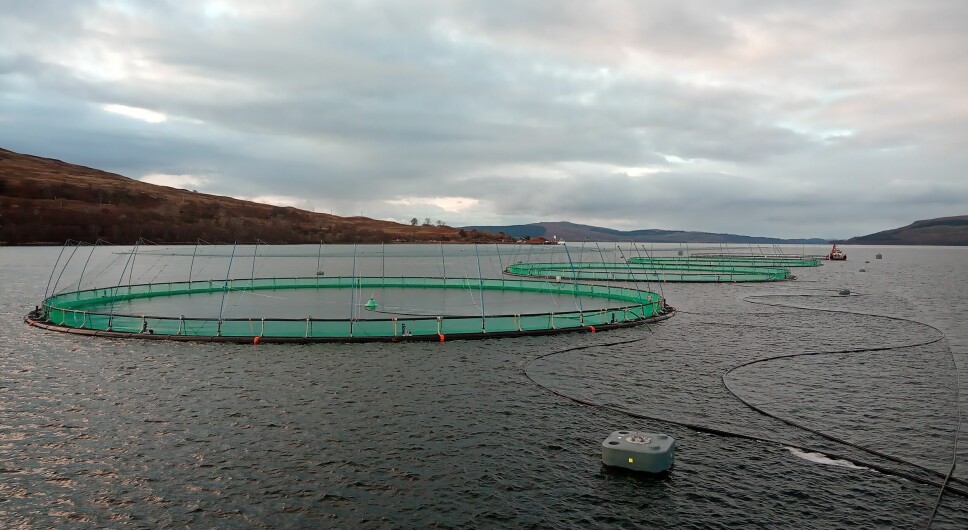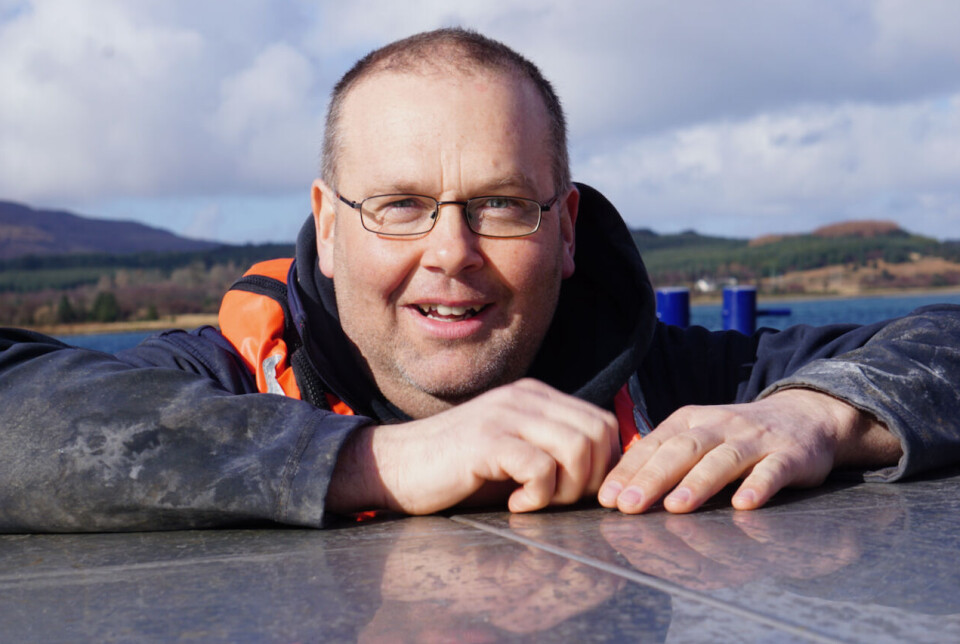
Scottish Sea Farms installs its first 160-metre pens
Upgrade reduces number of cages and is better for fish and farm team, says salmon producer
Scottish Sea Farms (SSF) has installed its first 160-metre circumference salmon pens, at its Fishnish A site off Mull.
The site’s ten 100-metre pens have been replaced with four of the larger pens capable of supporting the same biomass.
These will deliver several key benefits in the process, farm manager Alastair Fraser told SSF’s staff newsletter, The Source.
Better oxygen
“This new £1.3 million set up promises more room for the fish, better water flow, and better oxygen, all of which will help the salmon thrive,” said Fraser.
“Dealing with four pens instead of 10 also gives us more time as a farm team to focus on fish health and biological control.

“We can carry out any treatments faster, as it’s often the number of pens that takes time, as opposed to the number of fish.”
The larger pens will also add to health and safety advances.
Safer platform
Andrew MacLeannan, SSF’s area manager for Mull, said: “Fishnish is one of the highest energy sites on the mainland in terms of weather and current speed, so when we were looking to upgrade the farm infrastructure, it made sense to go for the larger pens because they’re renowned for less movement in the weather.
“The bigger the pen, the heavier the mooring and the easier it’s going to be to make it safe, both for the team and the fish.
“All the lifting will be done by winches, with 10 fitted to each walkway, which can be remotely controlled from a boat. It further adds to the safety of the staff and fish, as it gives us more control over the netting systems.”
The 160-metre pens, moorings, and HDPE Midguard knotted nets designed to deter seals, are supplied by Scale AQ.
Lessons from Norway
To familiarise themselves with the equipment, MacLeannan and Fraser made two separate trips to Norway to observe operations at SSF co-owners Lerøy and SalMar, which both use the larger pens.
“The farm team were a wee bit apprehensive at first but excited too,” said Fraser. “It’s been a new challenge for us all, and a big learning curve, but with Scale AQ’s help it’s actually been quite straightforward.”
Although the larger pens are common in Norway, fish farmers in Scotland had rarely given permission for anything bigger than 120-metre pens until last year.
A decision by regulators to relax the size limit tied in with other rule changes that gave salmon farmers more freedom to move pens to more advantageous areas within the boundaries of their sites, in the same way that land farmers can move fences in their fields.
Where bigger is better
Scotland’s biggest salmon farmer, Mowi, was the first to introduce 160 m pens, at its combined Seaforth and Noster site off Lewis in spring 2021 and has recently installed them at a site on Loch Hourn.
Mowi Scotland has chosen even larger pens for its exposed site at Hellisay, Barra, where infrastructure failures led to three escapes in a period of 27 months. The larger the pen, the better it can ride the waves, and Mowi will use 200-metre pens.
Another salmon farmer, Cooke Aquaculture Scotland, has specified 160m pens for its new East Moclett farm off Papa Westray, Orkney, which will have a maximum permitted biomass of 3,850 tonnes and is 2.2 miles from land.






















































